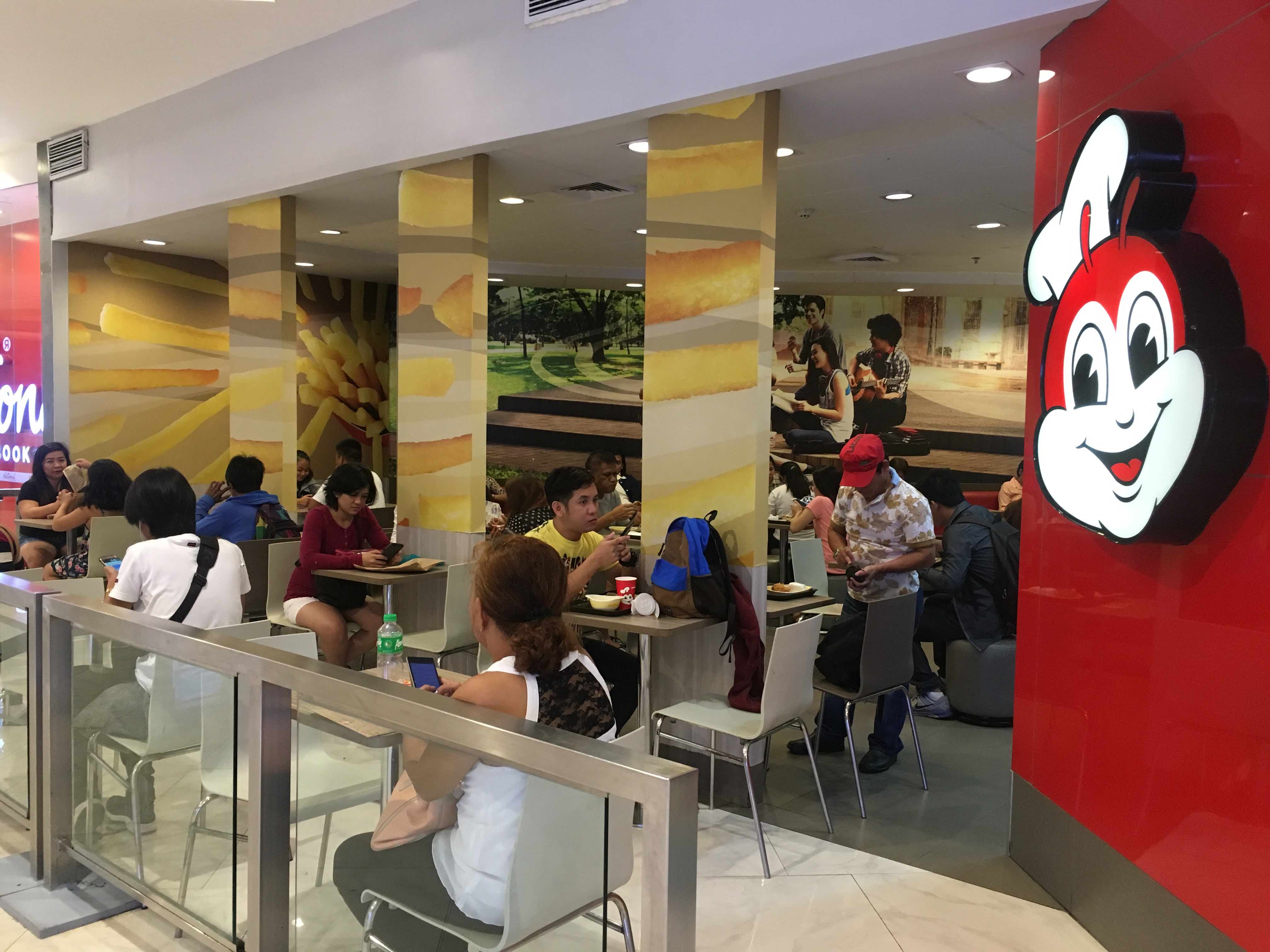It’s not the kind of thing you see every day in Italy — hundreds of people queuing in a line that stretched around the block, patiently waiting for a taste of sweetened spaghetti topped with processed cheese and hotdog slices.
That, however, was exactly the scene when Jollibee opened in Milan in March, its first branch in Europe. Filipinos from all over the continent flocked to the city on launch day.
It wasn’t a one-off, either. The pilgrimage and crowds were replicated when Jollibee opened its first outlet in Toronto a month later, part of an international expansion that is only beginning.
Last month, Jollibee’s chief executive officer, Ernesto Tanmantiong, said in a TV interview that the company plans to open 100 new stores in Canada over the next five years. The chain also announced plans to expand to Japan, Australia, and Malaysia.
This ambitious expansion is by all appearances an early success, even as Jollibee is beset by labor issues back home.
In May, Jollibee Foods Corporation topped the Philippine Labor department’s list of companies involved in labor-only contracting, an illegal practice designed to avoid providing workers with health insurance.
The dispute has received plenty of press, but it’s barely made a dent in the fast-food giant’s seemingly impermeable popularity, buoyed by masterfully crafted advertising that draws heavily on personal memories and Filipino national pride.
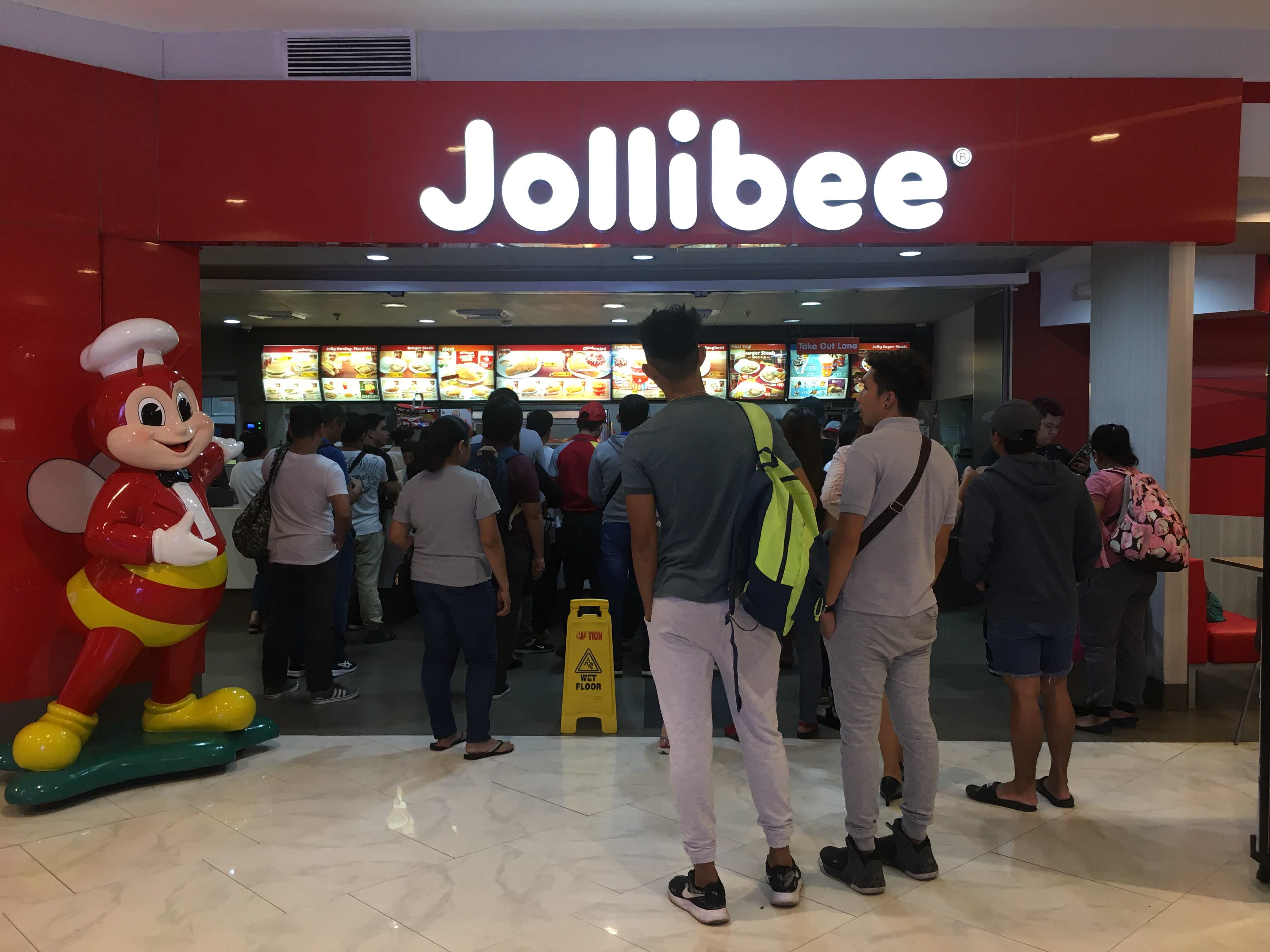
The power of nostalgia
Like many of its branches, the Jollibee location that Coconuts Manila visited one Thursday afternoon last month remains packed with customers for most of the day.
At one point, the line leading to the counter extended beyond the restaurant’s entrance and into the mall’s corridors. The queue was so long that a staff member had to jot down orders from customers in line just to speed up the process.
There were families with young children, young professionals in office uniforms, and groups of friends sharing tables — almost everyone with at least one order of Chickenjoy, the menu’s trademark item.
At one of the tables sat friends Joem Rosario and Lee Delmo, both eating the same combo that had them lining up in Italy: fried chicken with sweet Filipino-style spaghetti.
Both men are Jollibee toy collectors and met through a Facebook group where members buy and sell retro memorabilia. Rosario, 36, is single and works a night shift at one of the many business process outsourcing companies in the Philippines. Delmo, 37, is a police officer and a father of three.
Both men got into collecting in an attempt to relive the joy they said they felt as children.
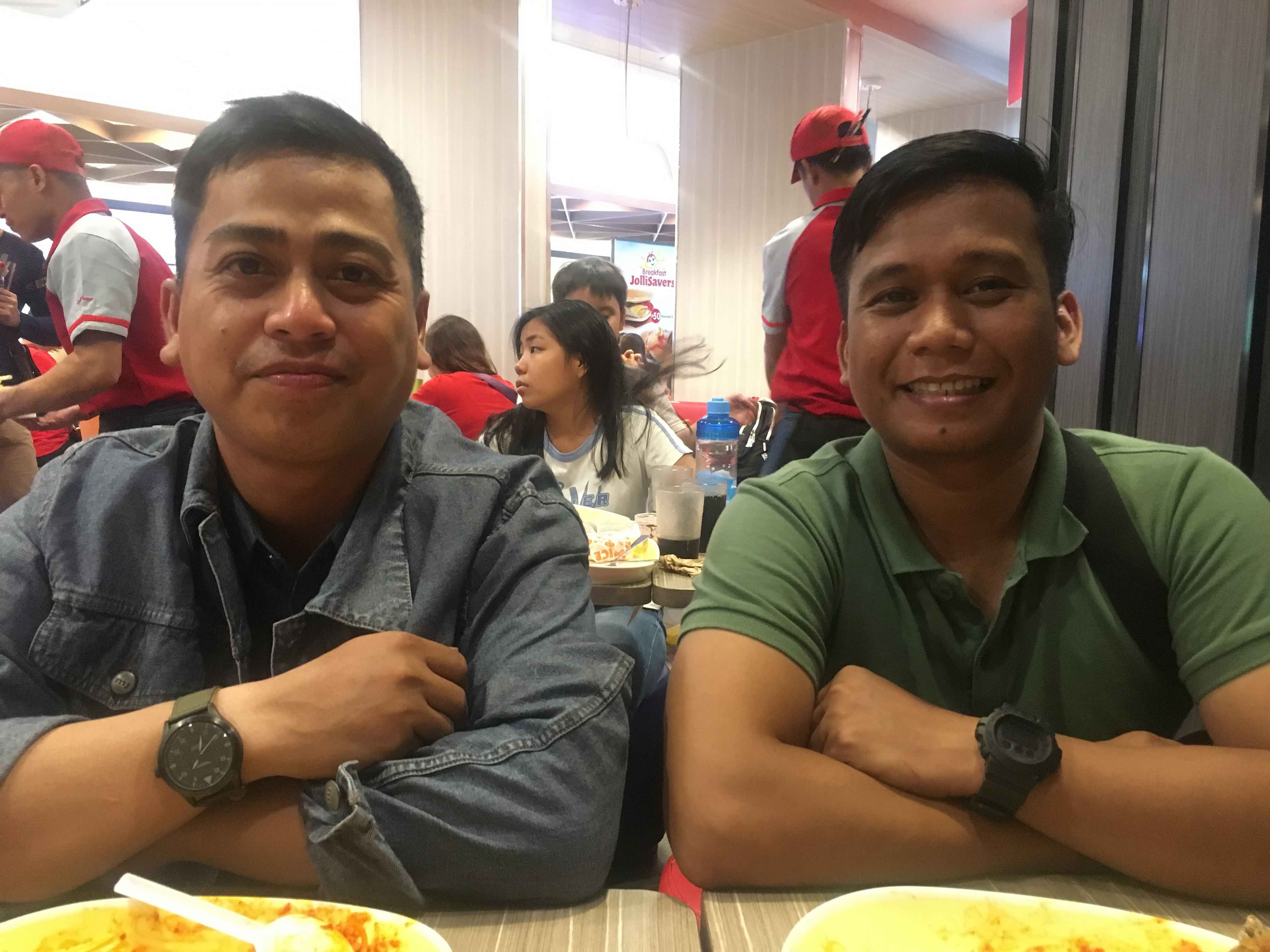
“It’s a great memory recall for things you thought you’ve forgotten,” Delmo said in Filipino.
Wearing his crisp, navy blue police uniform, Delmo’s countenance softened every time he spoke about the toys he has bought since starting his collection two years ago.
For our interview, he brought with him the very first item he purchased, the “Swing Pen” featuring the now-discontinued Jollibee character Lady Moo.
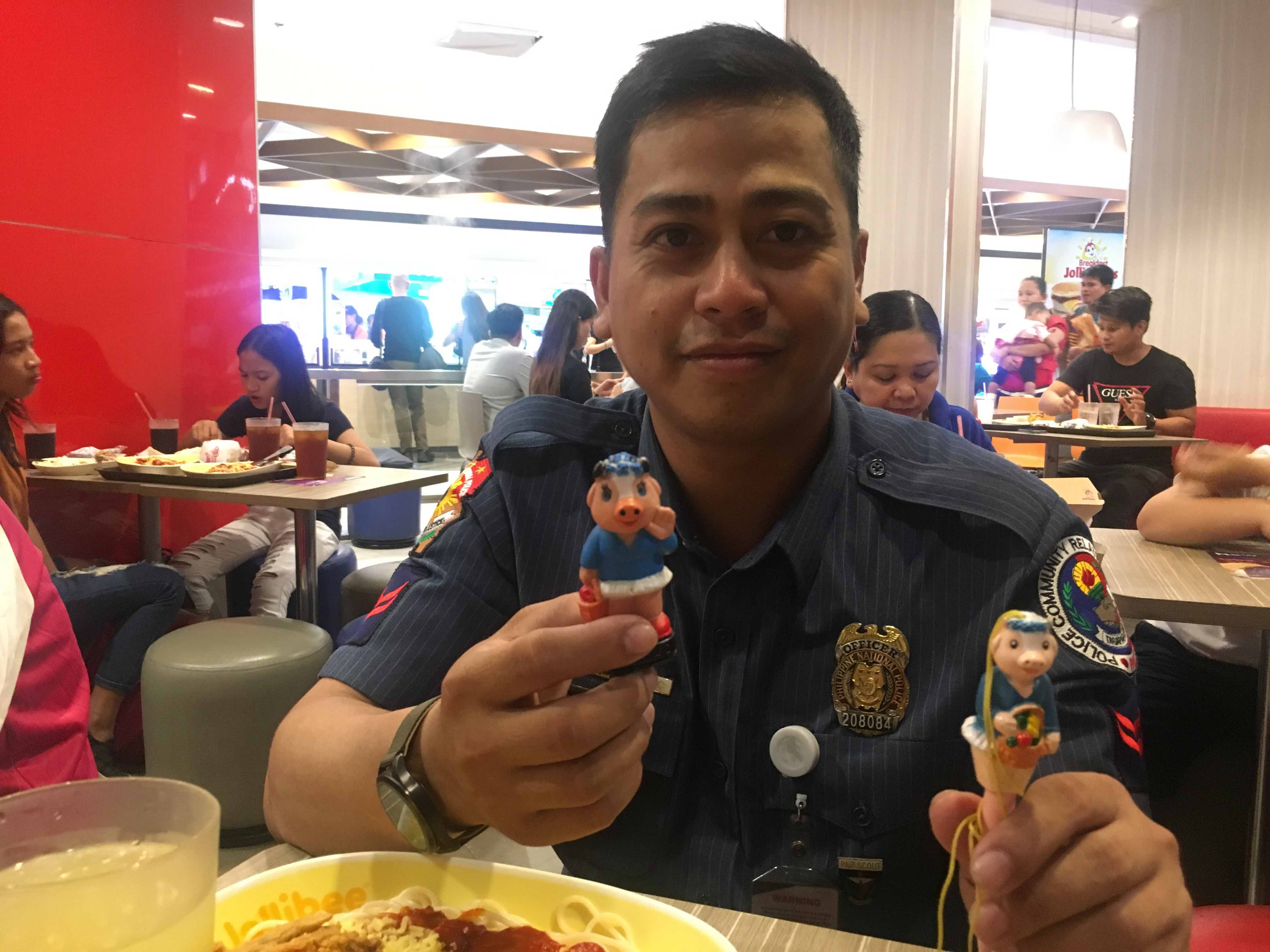
“This is very precious to me,” he said, smiling.
Both Delmo and Rosario grew up in the ’80s, the decade when Jollibee transformed from an ice cream and soda fountain shop in Cubao, Quezon City, into the giant corporation it is today.
For them, the restaurant is like a time machine to the good ‘ol days.
Rosario, who only ate in Jollibee once as a child — his family couldn’t afford it then — recalled how he began visiting the restaurant regularly after getting a raise in his allowance during his first year in college.
Delmo, on the other hand, recalled how his father, a government worker, would bring he and his brothers to Jollibee as a treat on paydays or when his mother, an OFW (Overseas Filipino Worker), sent money back home. When the day came that he received his first paycheck, Delmo made a point of spoiling himself with Jollibee’s biggest burger, the “Champ,” and a large Coke.
This sort of sentimentality toward the fast food chain is common among Filipinos, especially millennials who, for the most part, don’t know life without it.
“I think Jollibee’s like a staple. Everyone has a first story of their Jollibee experience,” said Cherie Alfiler, a social anthropologist for market research firm Bootleg Innovation Design, and lecturer at the Ateneo de Manila University.
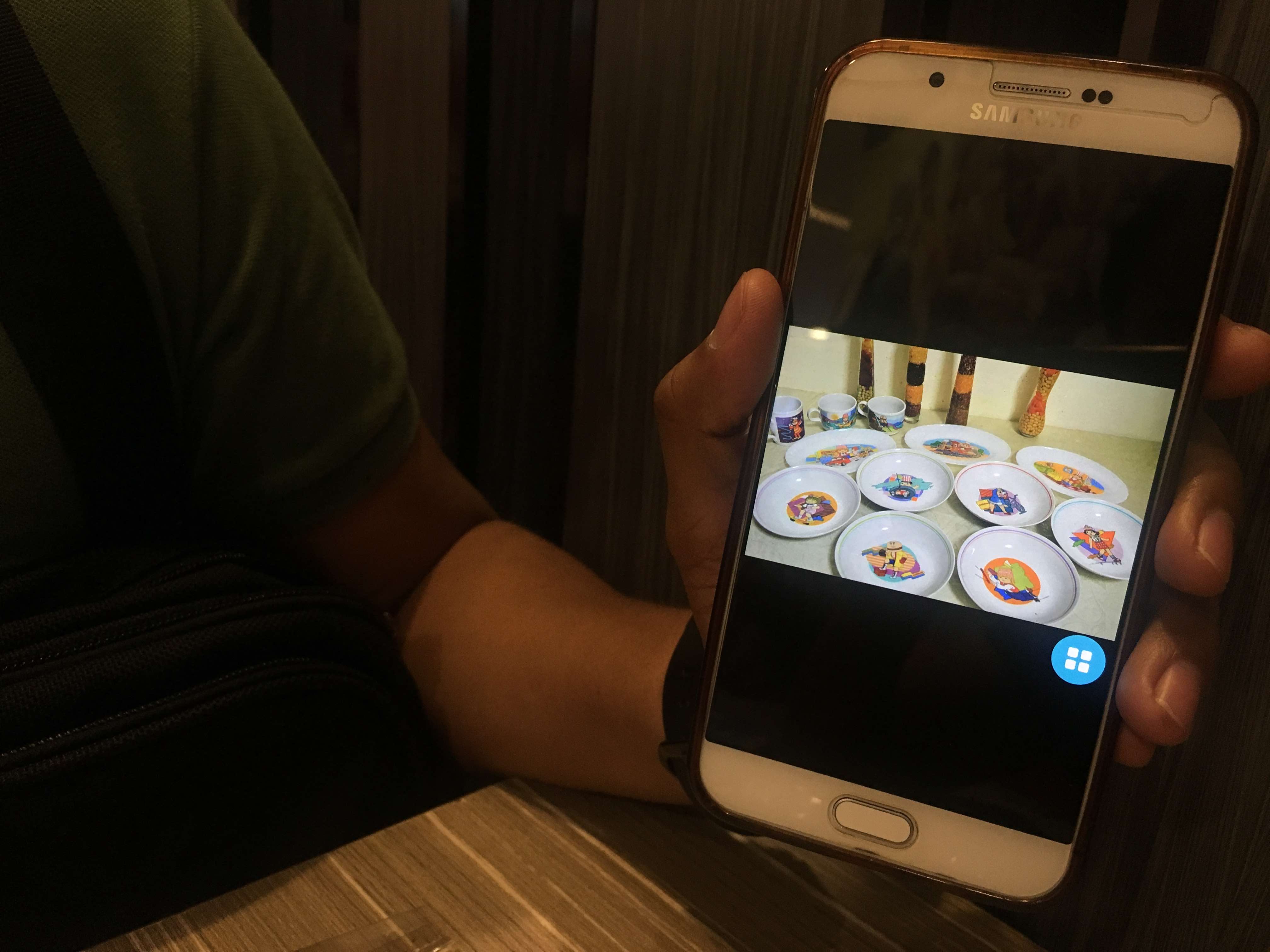
Somewhere along the way, Jollibee has tipped from being just a restaurant to being considered part of Filipino culture, something Alfiler said can be easily connected to early childhood visits.
It starts once a child enters a Jollibee for the first time, she told Coconuts Manila last month. “You have all these toys, and the taste has been tailored to suit the taste of the Filipino — it’s very much embedded in that lifelong process of socialization,” she said.
Apart from capturing the nation’s flavor preferences, Alfiler said Jollibee’s marketing efforts work overtime to embody Filipino values — most notably the importance of family.
Rosario and Delmo’s overall impressions of the brand seem to echo that claim.
“For me, Jollibee is family,” Rosario said. “It’s like it embodies family bonding.”
Delmo agreed. “[I think] ‘happiness.’ It’s nice when you’re always with your family,” he said. “Especially for me, I have children. When they grow up, they’ll remember ‘oh, we ate there with our family before.’ … [They’ll recall] the happy moments.”
But as recent reports have shown, life as a Jollibee worker isn’t always so happy.
In May, the Philippines’ Labor Department tagged Jollibee for being one of the companies with the most “contractual” workers — those hired for a period of less than six months, a common practice among businesses seeking to avoid providing legally required benefits for permanent employees.
This includes the more than 6,000 workers the government demanded Jollibee to regularize in April. Reuters reported that Jollibee had a total of 12,000 employees in 2016, which means at least half were contractual.
Jollibee has repeatedly denied hiring contractual workers but acknowledged that it outsources some workers from government-accredited service providers, which, of course, accomplishes precisely the same thing — staffing up while not paying benefits.
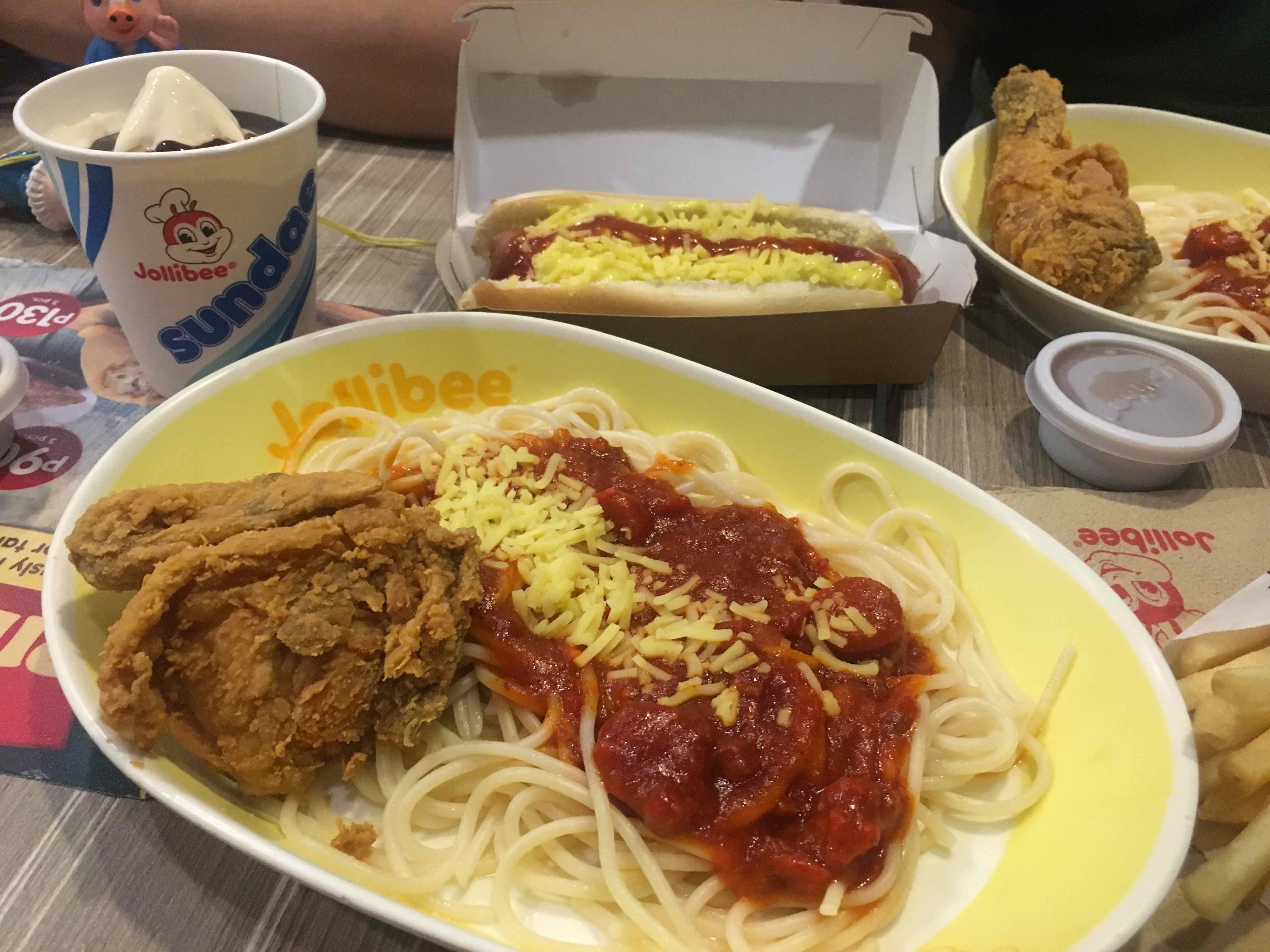
#PinoyPride
The love for Jollibee can also be viewed through a wider lens: that of national pride.
At first glance, Jollibee’s menu does not seem Filipino at all. But it is, and the distinction is instantly clear if you’re from the Philippines.
Jollibee’s flagship burger the “Yum,” for instance, has the standard buns and beef patty you’d be accustomed to at any burger joint, but the light orange dressing similar to a Thousand Island gives it a boost of that mild sweetness Filipinos look for.
There are also more traditionally Filipino items like the Palabok Fiesta — rice noodles in a creamy shrimp sauce — and the dessert halo-halo made with crushed ice, sweetened beans, and ice cream, which is only available in international stores.
Positioning itself as a distinctly Filipino brand was a conscious effort on Jollibee’s part.
Brand and strategic planning consultant Marie Pascual told Coconuts Manila this was a key way the chain set itself apart when McDonald’s — already an international industry giant at that point — came to the Philippines in 1981.
Although not affiliated with Jollibee, Pascual has been in the advertising industry for about 20 years and has observed the brand grow, both as an advertiser and as a mother of two boys who grew up eating there.
“The beautiful foundation that Jollibee has is that it focused on what the Filipino looks for,” Pascual told Coconuts Manila in a mix of English and Filipino.
It’s a strategy that’s obviously resonated, with Filipinos loudly proclaiming their “Pinoy Pride” whenever Jollibee makes an appearance in the international news, like the time it was hailed the best fast-food fried chicken in Hong Kong.
The same type of excitement is often generated whenever foreigners broadcast themselves gorging on Jollibee’s food in “muckbang” challenges, or post “first impressions” videos on YouTube, where the comments section is sure to be filled with Philippine pride.
A win for Jollibee, it seems, is a win for every Filipino.
Alfiler, the anthropologist, said that sense of pride in something one is not personally involved with can be analyzed in different ways. It can be seen for the function it serves in society or as a response to conflict.
Pinoy pride, Alfiler said, functions as a reason for Filipinos to unite.
One of the few examples she cites as a suitable comparison to the Jollibee phenomenon is the country’s love for boxing legend Manny Pacquiao, another export that’s become globally known.
“When there’s a match between Pacquiao and a foreigner, streets are empty, there’s very little crime. It brings people together,” Alfiler said.
That pride, she said, can also be viewed as a shared societal reaction to hardships the country has experienced in the past.
“[M]aybe it is rooted from our very long experience of oppression. That when we experience success, we try to highlight it so much.”
From that perspective, it’s easy to see why the Jollibee story is embraced.
Much like skinny ex-baker Pacquiao winning 11 major world titles, there’s a David vs. Goliath/”us against the world” story in Jollibee’s taking on such well-known international brands.
Yes, Jollibee is massive, but context matters.
While McDonald’s is the number one fast-food chain in much of the world, it has never beaten Jollibee in the Philippines.
But Alfiler warned that “Pinoy Pride” has a downside too. “There’s good and bad to it,” she said.
Take Pacquiao, for example. He is so well-loved that people voted him into public office not once but three times, despite a glaring lack of credentials and controversial anti-LGBT remarks.
With Jollibee, a seemingly unconditional love for the brand has allowed many Filipinos to simply look away from issues like its reported contractualization practices.
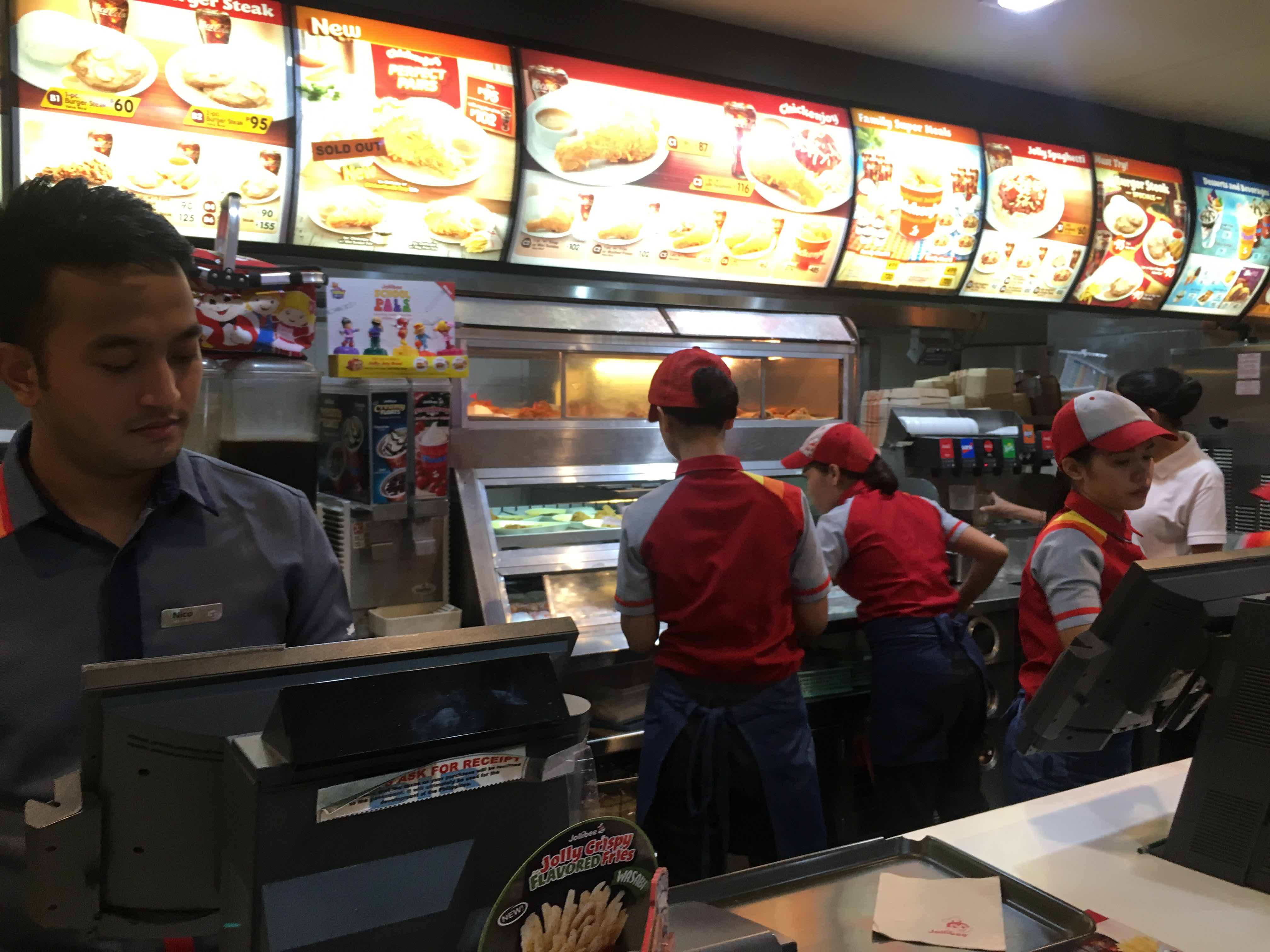
The ad game
At one point during Rosario and Delmo’s trip down memory lane, the two collectors sang a duet of Jollibee’s old theme song I Love You Sabado (Saturday), which they both still know by heart.
The song, which featured in a TV commercial in the ’90s, is just one of the many Jollibee ads that have since become cemented in Philippine pop culture.
Twenty years later, in the age of social media, their ads are even more ubiquitous.
“It’s not to say that digital [advertising] is cheap. However, digital allows you to tell more stories,” Pascual, the advertising consultant said.
She explained that a 30-second TV spot could cost PHP250,000 (US$4,669.32), as opposed to the free and unlimited uploads social media provides.
Aside from the cost, Pascual believes the internet has one priceless advantage over TV — feedback.
“The conversation is two-way. It’s not one-way,” she said.
The way Jollibee takes advantage of this is obvious in its popular online video campaign Kwentong Jollibee (A Jollibee Story).
Launched in 2016, the anthology series tells emotionally charged stories of everyday Filipinos that just happen to revolve around Jollibee menu items.
While they feature fast food products, Kwentong Jollibee videos are more about tapping into people’s sentimentality for the past.
This is maybe most obvious in an episode titled Crush, a story set in the 1980s about a secret admirer secretly leaving Jollibee burgers with post-it notes for the girl he likes. It’s got colorful headbands, thigh-high basketball shorts, the local ’80s ballad Don’t Know What to Do, and a twist ending heavy on fan service.
Because of the overwhelmingly positive reactions to the video online — it now has 18 million views on Facebook — Jollibee later came out with a sequel. Were it not for social media, the brand wouldn’t have been able to measure audience sentiments so easily.
According to Pascual, ads like Crush are meant to establish trust with customers and maintain brand loyalty even in times of crisis.
While this is obviously great for Jollibee, it’s precisely why anthropologist Alfiler thinks people need to be more discerning about how they interact with advertising.
“Jollibee is using them, formulating all these ads, tapping the different sentiments of the people, but at the same time, it’s still a company that has to make profit,” she said.
Showing how deftly evoking sentimentality can help the company maneuver tricky public perception issues like the current labor standoff, Alfiler pointed to recent alleged PR initiatives, like the one that had the Jollibee mascot randomly visiting the Ateneo de Manila campus. A visit that was, of course, photographed and widely shared on social media.
“[H]ow [Jollibee is] going to address this contractualization issue and how they wish to employ different strategies around it, it still remains to be seen. But I’m sure they have their strategies already being formulated,” she said.
It’s an easy sell to the average customer. People continue to share funny videos of the Jollibee mascot, get excited over new menu items, and count down the days ‘til a new toy will be released.
A few lonely souls have called for a boycott in protest of the company’s labor practices, but the movement has gained little traction.
Jollibee outlets, meanwhile, are as busy as ever.
[Editor’s Note: Numerous attempts to reach Jollibee for this story were unsuccessful.]
